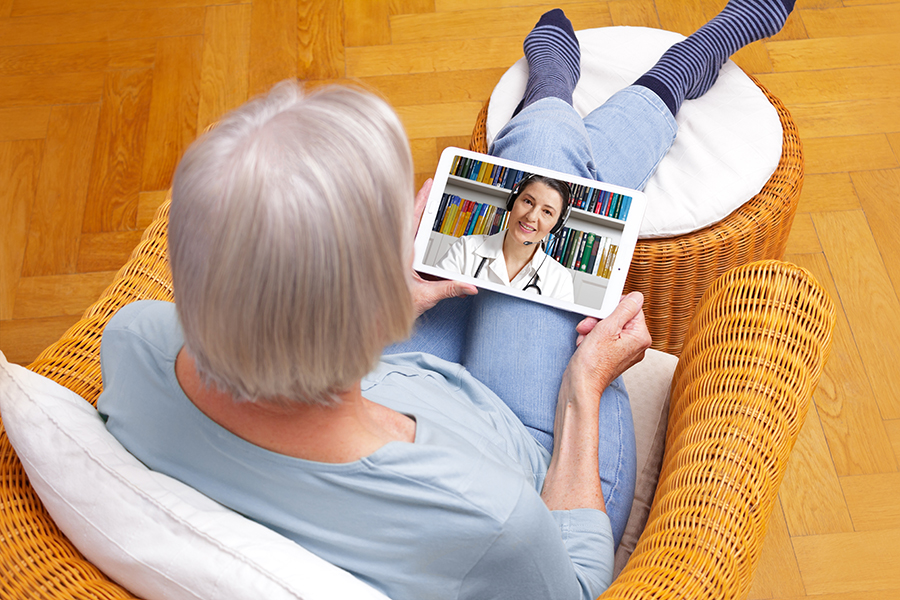According to the American Hospital Association (AHA), 76 percent of U.S. hospitals use video and other technologies such as telehealth to connect with patients and consulting practitioners.
In March 2020 and March 2021, Sykes surveyed 2,000 adults about their telehealth opinions and experiences. According to March 2021 survey results, 51.64 percent of participants said telemedicine had helped them visit their doctor more frequently. Since adopting telemedicine, 31.26 percent of Americans say their healthcare costs have decreased.
Telehealth vs. Telemedicine, Is It the Same?
Although sometimes used interchangeably, there is a distinction between the two. This is how they differ:
- Telehealth: A wide range of technologies and services used to offer patient care and improve the overall healthcare delivery system, including remote non-clinical services.
- Telemedicine: A subset of telehealth solely focused on delivering healthcare and education over long distances using technology for remote clinical services.
Coronavirus Ushers in a New Era of Healthcare
When social distancing, shelter-in-place, and rapid transmission were at an all-time high, healthcare had to overcome the difficulty of the traditional, in-person setting and rely on telemedicine to reduce the spread of the virus while keeping patients and healthcare teams safe.
Pandemic or not, people still need and seek the expertise of medical professionals. Additionally, some patients needed to physically see their doctor. Unfortunately, in-person visits weren’t possible due to the virus’s transmissibility and the patient’s own increased risk. So how do healthcare professionals care for their patients under these conditions? Telemedicine and telehealth.
Telemedicine and Telehealth Pre-coronavirus
But, how does this change compare to how we used telehealth and telemedicine before coronavirus?
The Assistant Secretary for Planning and Evaluation (ASPE) published a report on Medicare Beneficiaries’ Use of Telehealth in 2020 that shows:
- Before the pandemic, telehealth made up fewer than 1% of visits across all specialties.
- The percentage of telehealth visits in the U.S. increased substantially after the pandemic.
- During the pandemic, 92 percent of Medicare beneficiaries received telehealth visits from their homes, a service that wasn’t universally permitted before.
- The number of Medicare fee-for-service (FFS) beneficiaries using telehealth increased from approximately 840,000 in 2019 to nearly 52.7 million in 2020.
Telehealth is not a new concept. It wasn’t popular before the pandemic due to coverage issues and the general perception, among other reasons.
Telehealth, however, became invaluable during the pandemic. According to the CDC, telehealth visits increased by 154 percent from the last week of March 2020, compared with the same period in 2019. And this trend shows no signs of slowing down.
The Challenges to Overcome
When telehealth needs skyrocketed, many people had challenges to overcome.
First, some people lack the technology or do not have access to the internet at home. Unless someone is familiar with technology, we can’t expect them to be able to use it.
Second, internet access comes at a cost, and just because there is access doesn’t mean it’s affordable. But with help from The Affordable Connectivity Program (ACP), formerly known as the Emergency Broadband Benefit, remote healthcare became a reality for many underserved areas and communities.
With this benefit, technology is available to families and households struggling to afford the internet. Eligible households will be connected to jobs, healthcare, virtual classes, and more through this benefit.
Those who qualify and wish to enroll in the ACP can apply at ACPBenefit.org. If you’re interested in learning more about the program, please visit fcc.gov/ACP.
Third, many insurers, including Medicare, did not cover telehealth and telemedicine services. Beyond that, many people believed these online services were no match for in-person visits.
Not only was there a coverage program, but there was also a perception problem.
Each of these issues has been addressed. Coverage is now widely available, including for Medicaid and Medicare beneficiaries. Additionally, 87.82 percent of people intend to utilize telehealth services after the pandemic subsides. A further 85.52 percent of people said this technology made getting the care they need easier.
4 Ways Telehealth Is Changing Patient Care
- Patients can remain in the comfort of their own homes to receive healthcare. This is important during the pandemic, bad weather, issues with mobility, and lack of transportation.
- Johns Hopkins Medicine points out that telemedicine can give some specialized practitioners an advantage by allowing them to “see” you in your home environment. Allergists may be able to spot triggers in your environment that cause allergies.
- Telehealth provides healthcare to those who live in outlying areas or do not have access to nearby medical services.
- Telehealth and telemedicine greatly benefit vulnerable communities. Compared to traditional healthcare, telehealth is more accessible, affordable, convenient, and capable of providing regular monitoring.
Telehealth benefits patients and physicians, but where will it go from here? The future of telemedicine looks bright. As technology advances and more people turn to the convenience of online physician and healthcare consultations, this service will only continue to get better.
The current state of telemedicine goes beyond convenience. Online self-diagnosis has become increasingly popular since the emergence of the internet. This has likely caused unnecessary stress or failure to consult a healthcare provider for a possible health issue.
With that in mind, does telehealth have the potential to overthrow Dr. Google? Now that we have access to a physician who is as close as a phone or computer screen away—and patients realize that they can get an actual medical diagnosis and treatment from one.

